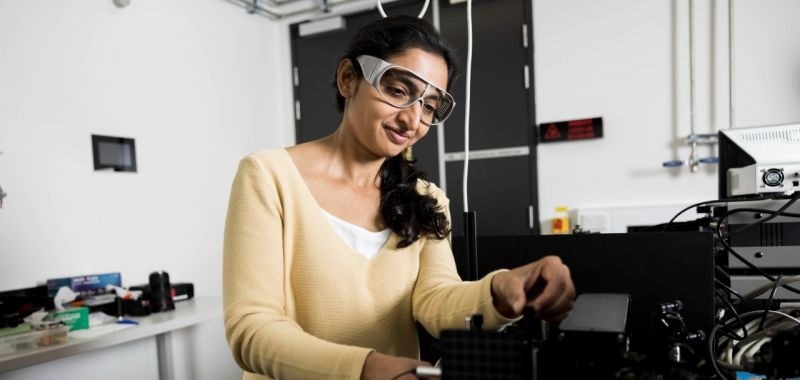A significant advancement toward achieving photochemical upconversion in solid-state materials has been made, enhancing important breakthroughs in renewable energy, water purification, and advanced healthcare.

Image Credit: Exciton Science
Scientists from Exciton Science at UNSW Sydney have successfully shown that a crucial step in the upconversion process can occur within solid materials. This development increases the likelihood of producing practical devices on a commercial scale. Potential uses for this technology include enhancing hydrogen catalysis and generating solar energy.
The findings from their research have been published in the prestigious journal ACS Energy Letters. This discovery is expected to catalyze significant shifts in the strategies adopted by scientists worldwide who are delving into the intricate yet highly promising field of photochemical upconversion.
I think people are going to immediately start copying us. I consider this a breakthrough because this approach can be adapted to upconverting into the ultraviolet or from the infrared. There’s so much we can do with it.
Tim Schmidt, Professor and Exciton Science Chief Investigator, University Of New South Wales
Upconversion involves gluing two low-energy photons of light together to create more energetic, visible light, which can be captured by solar cells or harnessed for other purposes.
The technical term for the gluing process is “triplet–triplet annihilation,” which produces a “singlet exciton.” An exciton is a quasiparticle that exists when an electron and the hole it is bound to become excited by light or another source of energy.
Controlled and dependable triplet-triplet annihilation, which allows photochemical upconversion, might increase the efficiency of solar energy devices from 33.7% to 40% or even higher.
Most research on upconversion uses liquids. To make this mechanism practical for real-world devices, it needs to work well in solid materials.
In this study, Dr. Thilini Ishwara, a Research Fellow at Exciton Science, and her team developed a thin film made of nanostructured alumina that was treated with a sensitizer. They filled the tiny pores of this structure with emitter molecules in a concentrated solution, which resulted in an impressive photon generation quantum yield of 9.4%.
The researchers’ next objective is to progress beyond using a concentrated solution, aiming to achieve similar outcomes in a completely solid state, possibly by employing a gel-like material.
If you can make it small enough, you could use it for even doing chemistry in the body. You can generate higher energy light at a targeted place inside the body to treat tumors or create medicines with laser precision. Water purification is another use for upconversion. If you can upconvert the visible spectrum into quite a harsh UV, you can kill bugs and save millions of lives each year in the developing world.
Dr. Thilini Ishwara, Research Fellow, Exciton Science
New upconversion techniques could potentially power various applications, including infrared technology such as night vision goggles, and even enhance the capabilities of 3D printing.
Journal Reference:
Ishwara, T., et al. (2023). Nanoporous Solid-State Sensitization of Triplet Fusion Upconversion. ACS Energy Letters. doi.org/10.1021/acsenergylett.3c01678.